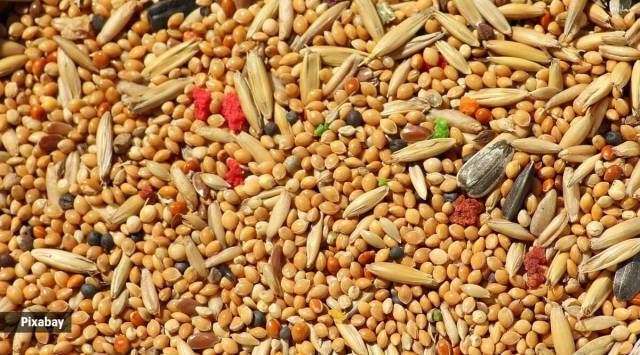The Army has decided to include millets in the rations of troops stationed at various locations, including the northern borders, in order to promote the consumption of the indigenous grain in light of the United Nations General Assembly’s proclamation of 2023 as the International Year of Millets, the Army announced on Wednesday.
The Army said in a statement, “The historic decision will ensure that troops are provided with native and traditional grains after more than half a century when these were terminated in favour of wheat flour.”
It was stated that millet would now be vital to every soldier’s daily diet.
The Army stated that food made with millets had established health benefits and is suitable to the Indian geographical and climatic circumstances and will thus be a crucial step in minimising lifestyle diseases and boosting unit morale. “As a good source of protein, micronutrients, and phytochemicals, millet enhances the nutritional profile of a soldier’s diet,” it stated.
Officials in the Army stated that the scale of rations for troops was determined based on studies that determined the calorific value of food required for soldiers stationed in various areas in order to ensure that they receive a balanced diet.
An officer stated, “Special rations are issued to troops operating in high-altitude or super high-altitude places to compensate for calorie shortfalls of personnel stationed in challenging situations.”
The Army has requested permission from the government to purchase up to 25 percent of the authorised entitlement of cereals (rice and wheat flour) in rations for troops beginning in the next fiscal year.
EXPLAINED
Determine millet proportion for rations.
Beginning with the next fiscal year, the Army has requested permission to purchase up to 25 percent of the authorised entitlement of cereals (rice and wheat flour) as millet flour for troops’ rations. According to reports, a new study will be done to determine the percentage of millet in rations in high-altitude or other challenging regions depending on the caloric needs of the troops.
The troops will be provided three popular forms of millets flour, including bajra, jowar, and ragi, considering their preferences. The grains will be acquired and distributed to the troops in accordance with the options they exercise and the quantity they request.
A second officer explained that this means the grains supplied to the troops at a particular place will depend on their preferences. “For example, troops from southern India and northeastern India favour rice, but troops from northern India prefer wheat,” the officer explained.
In addition, the Army has issued directives to all commands mandating the widespread use of millets in organised functions, such as Barakhanas and canteens.
There is a particular emphasis on introducing value-added millet products and snacks to troops stationed along the northern borders.
According to the Army, millet foods are being offered through CSD canteens, and specialised sections are being established in retail centres. In addition, “Know your Millet” programmes are being performed in educational institutions.
While millets are primarily a native grain, a new study will assist in determining what percentage of millets should be grown in high altitudes or other challenging places based on the caloric needs of the troops.
The Ministry of Agriculture and Farmers’ Welfare is the ministry in charge of promoting the consumption of millet, which the Centre has been promoting through a number of methods. According to government sources, each ministry and department of the Union has been asked to prepare and submit a calendar of planned activities to commemorate the International Year of Millets.
